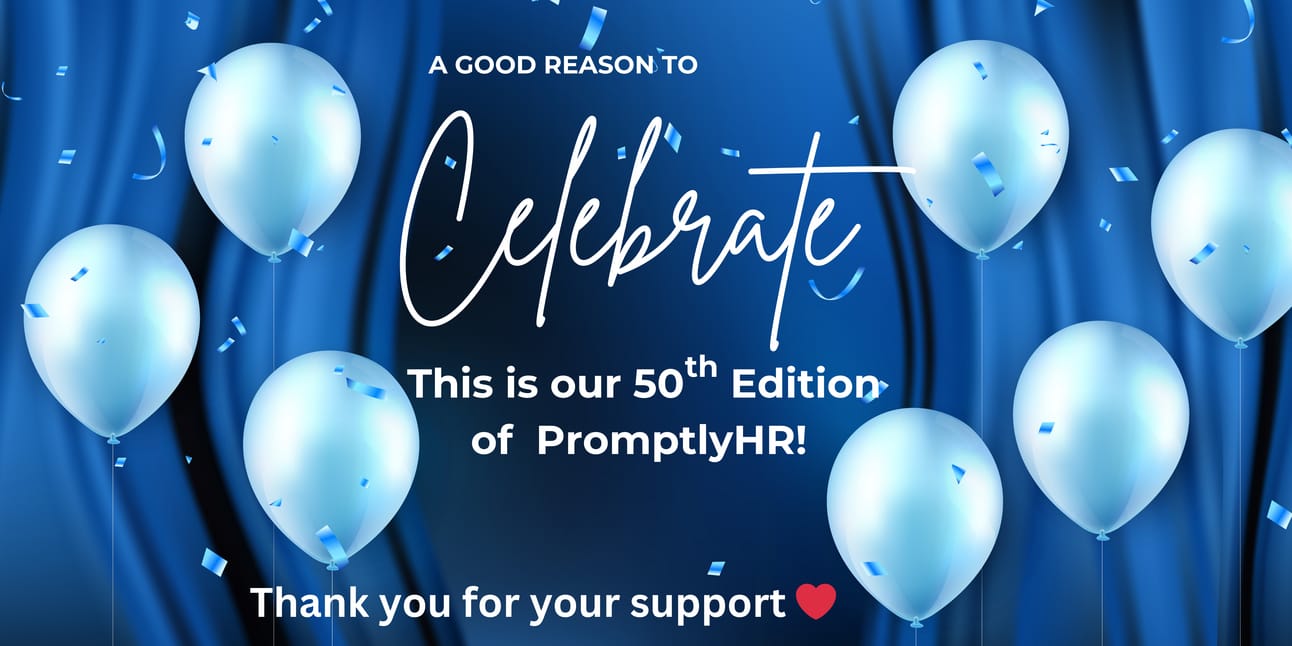Holiday gifts your team will actually love
No shipping addresses needed
140+ countries supported
Recipients can swap gifts and choose sizes

🤖 How AI Tools Work as Our Digital Colleagues

There you are in a team meeting, and your “colleague” Alex contributes a detailed analysis of the latest hiring trends, flags potential skill gaps, and even suggests training options—all within minutes. You might forget that Alex isn’t human. It’s an AI tool embedded into your team’s workflow, but its efficiency and engagement make it feel almost...alive. If this hasn’t happened to you you - it is coming. This phenomenon is known as anthropomorphism—assigning human characteristics to non-human entities, like the AI tools we increasingly rely on.
In HR, these “digital colleagues” are becoming integral parts of the team, helping with everything from resume screening to predictive analytics. But while these AI tools are incredibly smart, they are still just that—tools. As humans, it’s easy to fall into the trap of treating AI like a sentient team member. That’s why it’s essential to stay grounded, manage transparency in AI use, and leverage its capabilities without overestimating its “personality.”
🤔 Why This Matters in the HR Landscape
1. Enhancing Collaboration, Not Replacing It
AI can analyze data at lightning speed, provide unbiased insights, and automate repetitive tasks, but it lacks human intuition, empathy, and creativity. For example, an AI tool might recommend a candidate based on skill matching, but it takes a skilled recruiter to gauge culture fit during an interview. Treating AI as a “colleague” should complement—not replace—human expertise.
2. Managing Expectations of AI “Colleagues”
It’s tempting to think of AI tools as infallible, but they are only as good as the data they’re fed and the programs that run them. Consider a chatbot providing employee support. While it can handle FAQs, it might struggle with nuanced queries about sensitive workplace concerns. HR leaders need to set realistic expectations and communicate clearly with their teams about AI’s limitations to prevent frustration or misplaced trust.
3. Bridging the Gap with Effective Prompts
Anthropomorphism can sometimes lead to vague or overly conversational interactions with AI. Remember: AI tools rely on structured prompts to deliver robust responses. For example, instead of saying, “What’s the hiring landscape like?” you might ask, “Generate a summary of hiring trends in the technology sector for the past six months.” Paul’s guidance on crafting effective prompts can help you bridge the gap between casual expectations and actionable results.
Anthropomorphism can sometimes lead to vague or overly conversational interactions with AI.
🤔 How to Embrace AI Responsibly
Here are three reasons why understanding and managing the anthropomorphism of AI works:
1. AI Elevates Human Potential
When you treat AI as a tool that augments human abilities, you unlock its full potential. For example, an AI “colleague” might identify patterns in employee engagement data, allowing HR teams to focus on implementing meaningful strategies to address those trends. This symbiosis ensures that technology enhances—not overshadows—human contributions.
2. Trust and Transparency Build Stronger Teams
If employees believe AI tools are smarter or more “human” than they are, it can create fear, resistance or even worse: sabotage. HR leaders must foster trust by explaining how AI works, what it can and cannot do, and how its use benefits the team. Transparency leads to acceptance and helps maintain a balanced perspective on AI’s role.
3. Prompting Skills Are the Key to Success
The way you interact with AI determines the quality of its output. HR professionals who learn to craft precise, purposeful prompts can unlock deeper insights and better support their organizations. From generating workforce plans to addressing diversity gaps, mastering prompts is the skill that transforms AI from a basic tool to driving stronger business outcomes.
Takeaways:
Treat AI as a collaborative tool, not a sentient colleague. It enhances human potential but doesn’t replace it.
Clear communication about AI’s role builds trust and ensures teams understand its limitations and benefits.
Effective prompt crafting makes AI a valuable part of your HR workflows, and Paul can help you master this art!
Exploring the relationship between humans and digital colleagues requires you to get your team to accept them, understand them, and then learn how to effectively use them. Don’t delay - get started today!
Need help getting started? Contact Paul and learn how he can start your team on their journey next week.

Perpeta Paul Pointer:
This week’s article is meant to provoke your thinking and address misconceptions about AI as we continue to inspire HR professionals like you to engage with AI tools thoughtfully and effectively.

📄 Prompt of the Week

Use this prompt to create a targeted plan that supports your teams in adapting to and thriving alongside AI digital colleagues.
ROLE:
You are an HR strategist specializing in change management and workforce training, with expertise in integrating AI into human workflows.
REQUEST:
Develop a comprehensive plan to help human employees work effectively with AI tools as digital colleagues. The plan should include strategies for building understanding of AI capabilities, managing expectations, fostering trust in AI tools, and enhancing collaboration between humans and AI. Provide specific training activities and resources to support employees during this transition.
GOAL:
The goal is to ensure employees feel confident and empowered to use AI tools as part of their workflows, maximizing the benefits of AI without undermining human expertise.
INSTRUCTIONS:
Outline a step-by-step approach for introducing employees to AI tools, including sessions on understanding what AI can and cannot do.
Suggest training activities that focus on practical applications, such as using AI to automate repetitive tasks or generate insights for decision-making.
Provide methods to address common concerns, like fears of job displacement or mistrust of AI-generated outputs.
Recommend ways to foster collaboration, such as creating workflows that clearly delineate human and AI responsibilities.
Use the following information to customize the response:
Current Team Dynamics: [Insert details about team roles, existing familiarity with AI, or specific AI tools being introduced]
Training Goals: [Insert specific objectives, such as improving productivity, reducing task load, or enhancing decision-making processes]
Replace the items in the [ and ] brackets to meet your specific needs.


Want to learn more about building great prompts? Paul publishes a Prompt a Day newsletter on LinkedIn!
Click Here to subscribe and get a daily idea of how to create powerful and effective prompts across a variety of topics, both personal and professional.

🤩 The Fun Side of AI

Using AI doesn’t have to be all work. Here is a fun way to interact with AI.
🎭 Role Playing Made Fun

ROLE:
Assume the role of [an historical or famous person]
REQUEST:
With you acting as that role, I want to discuss [topic]
INSTRUCTION:
Step 1: Introduce yourself as that ROLE and provide me with a brief background about you.
Step 2: Provide me with a brief overview of the topic I have chosen.
Step 3: When I respond with a question, you will provide an answer that the ROLE would likely respond with.
Step 4: Ask me a follow-up question.
Step 5: Continue this dialogue back and forth until I say, "Thank You"
When I stay "Thank You" we will end the conversation and you will say, "Good Bye"

Want to get better AI results?
Visit perpeta.com and discover how to use building blocks like snippets, profiles, and templates to make, store, and organize your perfect prompts.
Until next time, keep managing and developing people, one AI prompt at a time! 💎

